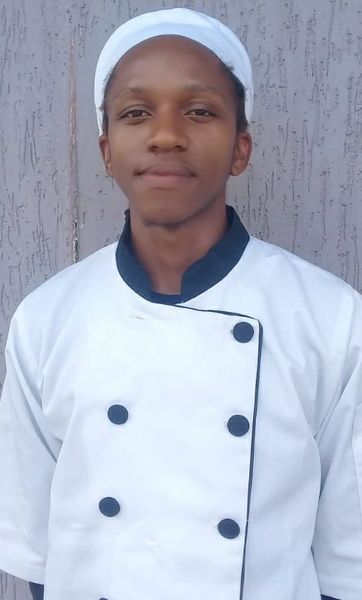Thabiso Motsamai, the former student of the National University of Lesotho (NUL), best known for works of art, takes telephone wires and makes brilliant baskets, vases, pencil holders and so on. “They sell well in the markets,” he said. “So I am hoping to keep increasing production.” You can use his baskets in your dining room to hold fruits. You can paste them on the sitting room for decoration. You can use them as washing baskets.
__________________________
WhatsApp him here: +266 56080248, get the at Cura Home Industries, Pioneer Mall.
In fact, to their use, there is not end.
In his dealings with one company, Thabiso, a hardworking artist, was presented with an opportunity. Could he or someone he knew be happy to use some waste telephone wires? “Well, I contacted my friend whom I knew could weave but I also took some of the materials and started weaving.”
__________________________
Milco is the chainstore that will sell only Lesotho products. Join it here:
He threw himself into the process of learning about weaving using telephone wire and experimenting until he got it right. The result are the colourful woven materials that will set your home apart.
Baskets are nearly old as humans. They have always been part of our lives. But how did they come to be? Before woven baskets, it appears humans used tree barks baskets. That is according to available archaeological evidence.
Those baskets were not strong and they would crumble in a matter of weeks.
Later, woven plant materials were used to strengthen the fragile baskets. In the end, humans started weaving to make baskets directly.
Baskets have always been part of the African culture. The material of choice has often depended on the kind of plants available in the area. In Lesotho for instance, Mosea Grass (Moutain Broom Grass) has been a grass of choice for weaving. The legendary Basotho hat are made from this grass.
Then entered modernity with telephone wires into the scene. The wire would soon find its way into woven products. Have you noticed that Basotho’s sticks, “melamu”, are decorated with knitted wires?
Although they are normally called telephone wires, they are not necessarily applied in telephones only but in all kinds of electric appliances. So it would be more correct to call them electric wires but, hey, sometimes convention (at least in the weaving industry) trumps accuracy and there is no harm caused.
Although wires are meant for a completely different use, they ended up in woven products.
What are they?
A wire is, usually cylindrical, flexible strand or rod of metal used to bear mechanical loads or electricity and telecommunications signals. Those who invented wires had those uses in mind.
“It turns our weavers had a different view altogether,” Thabiso said as he related the story of the wire use in weaving. “They started using telephone wires in weaving.” If you think about the properties of wires, you begin to appreciate this turn of events.
Wires are amazing!
Like plant fibres used in weaving, they come in fibre-like structures, long and cylindrical. As they are made of metal, they are dead strong! One of the most amazing properties of metals is that they are both strong and flexible in one go. That means you can shape metals as you want. Plant fibres may be flexible but they don’t match metals in strength and ability to last.
Interestingly, and in most cases, telephone wires come covered with insulating materials such as plastic, rubber-like materials, or varnish. Whereas such coverings are made to protect users from contact with electricity among other things, weavers have seen an advantage in them too.
“Since weaving, from time memorial, has always depended on hands, the plastic coverings make it easy to handle the wires,” Thabiso said. “Without such covering, metals can be very had on your hands.”
With all these characteristics in mind, it is not difficult to see why a new market of telephone wire woven baskets have emerged.
But their emergence was not always a rosy picture. “I’m told some weavers in South Africa used to literally tear down electrical and electronic appliances just to lay their hands on the wires, even if tha means stealing.”
They played hide and seek with the law.
That is, until a straight-thinking entrepreneur saw an opportunity.
Wires may be created specifically for electrical and electronic applications, but what if some are created specifically for weaving? It is, more or less, the same wires; it is just that now they are available to those who want to use them for weaving.
It’s as they have said, a pessimist sees problems in every opportunity, an optimist sees opportunities in every problem.
___________________________
Milco is the chainstore that will sell only Lesotho products. Join it here:


